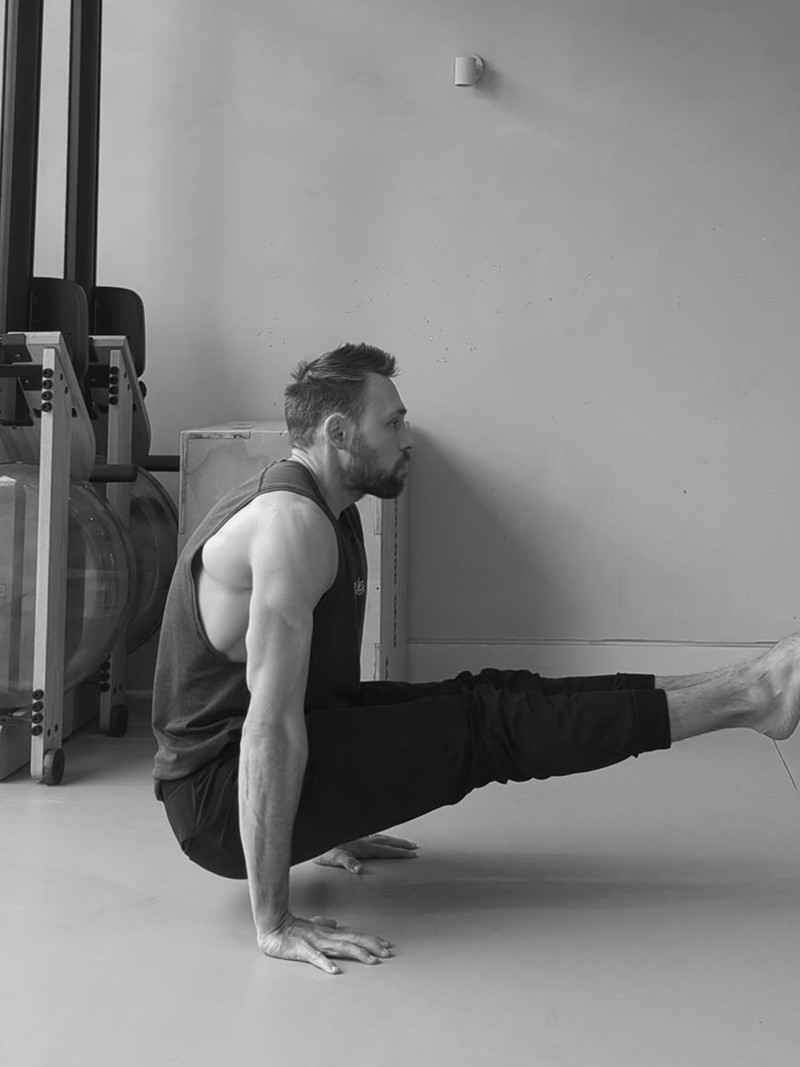Everything To Know About Stretching
Don’t Underestimate Its Importance
“Stretching is not just something you do for a warmup or cool down. Stretching is not just a passive practice. It should not always feel nice. In fact, it should be as taxing as strength training. At least that’s how it should feel if you want to use your time well and make real gains.”
Understand What It Is
“Stretching is any movement that demands a muscle or muscle group to lengthen. To be more specific, it’s a movement or static hold that takes place at, or close to, a person’s end range of movement. Personally, I prioritise four types of stretching. ‘Passive’ stretching entails a controlled hold at, or close to, a person’s end range for anywhere from 30 seconds to five minutes, using time, gravity and the breath to push deeper into the position. An ‘active’ stretch is about recruitment of a muscle, at or close to, a person’s end range. ‘Loaded’ uses an external force such as a weight to increase the demand and the capacity for movement (accessing a space that wouldn’t be possible without the weight) and treating it like strength training in a person’s end range. ‘Dynamic’ stretching is about moving in and out of a position that it wouldn’t be possible to get into passively or in a controlled manner.
Realise Its Potential
“Mobility equals possibility. If you can’t access a space, you can’t use it. We move to live, so moving well is vital to live well. More specifically, a proper mobility practice will improve range of motion, improve joint health, decrease risk of injury and aid in nervous system regulation. It will therefore improve how you feel, increase energy, directly impact your long-term health, and improve the way you hold yourself. From a longevity standpoint, the reason most people stop moving, training or participating in sport is because of pain. We talk so much about the heart and the lungs, but forget about the vehicle they are driving.”
Stretch With Your Goals In Mind
“How often to stretch depends on the person, the goal, and the intensity of the training. When first starting out, micro-dosing is extremely effective; 10-15 minutes of effective movement training daily will produce incredible results. Beyond that, anywhere from one to three proper mobility sessions of 20-60 minutes per week will take you to new realms.”
Make It Part Of Your Recovery Plan
“This is entirely injury dependent, but if a healthcare professional simply recommends that you should ’stretch’ as part of your recovery, find a better physio, doctor or trainer. Repeatedly, clients tell me they have been recommended yoga to improve their flexibility, or Pilates to strengthen their back or help with ‘bad knees'. Yoga is not an efficient route to better flexibility, nor is Pilates an effective option for strength development and movement mechanics (in the way it is taught in most classes now). The fact that these recommendations come from professionals highlights the real lack of understanding around true mobility and strength training.”
Equipment Is Optional (But Advised)
“It will help you get results sooner and keep things more exciting, but it is not necessary, especially when first starting out. It is, however, worth buying yourself a set of bricks or yoga blocks. They are a relatively low cost yet super versatile tool.”
Now Try Christian’s Top Three Stretches
“I would likely recommend three different stretches to every man I’ve ever worked with, based on how they are built and how they move. However, these are my most recommended.”
The Squat Sit
“This is a multi-joint movement that is the foundation of human movement, targeting the ankles, hips and trunk control. Accumulate up to five minutes a day, assisted or unassisted.”
The Couch Stretch / Long Lunge
“The couch stretch targets the musculature across the front of the hip and quad, allowing for better extension of the hip and activation of the glutes. The long lunge or half-kneeling front split is a more active variation that includes the hamstring too.”
The Elevated Hamstring Stretch
“The hamstrings are super responsive to stretch work, meaning you can make gains fast. Hamstrings that can tolerate a greater range of motion will enable proper function and movement of the hip. This stretch should be done with an anterior pelvic tilt, which basically means stick your bum out like you’re twerking and maintain a neutral spine.”
Visit TheMoveMethod.co.uk and follow @ChristianLewisPratt
DISCLAIMER: We endeavour to always credit the correct original source of every image we use. If you think a credit may be incorrect, please contact us at [email protected].


